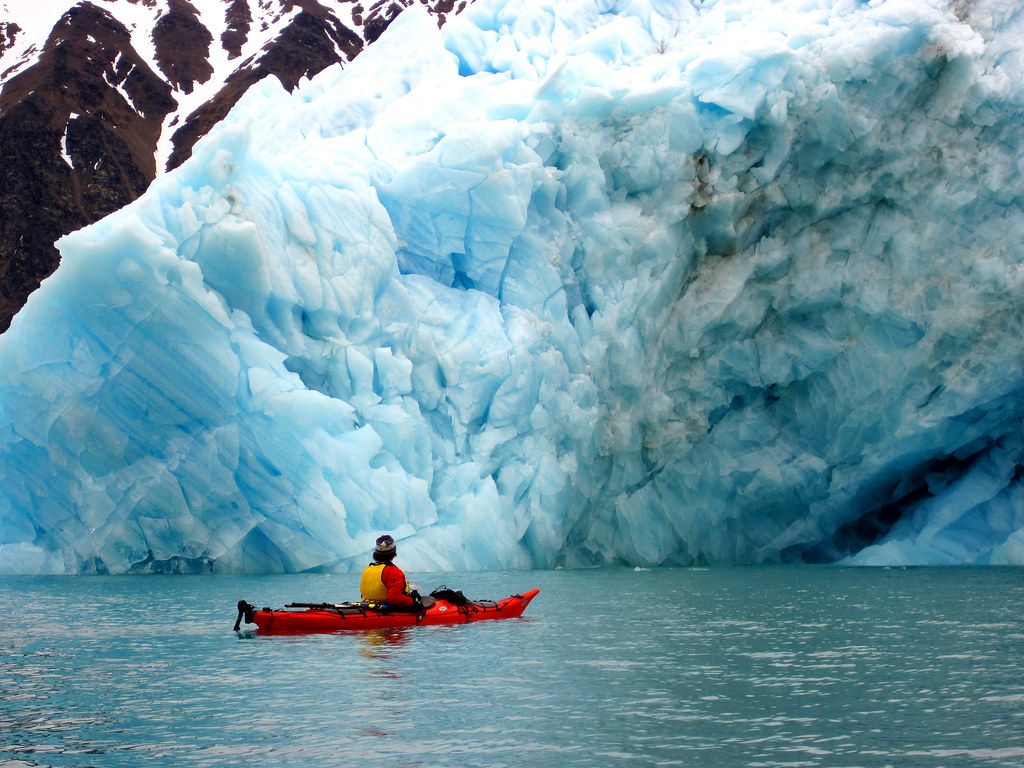From Aurora Expeditions, The Expeditioner, Dec 2012
[get your copy]
In 2012 the smallest Arctic ice pack on record coincided with the northern hemisphere’s warmest recorded summer. This year 500,000 square kilometres of Arctic sea ice melted—more than ever before recorded.
As darker open waters accelerate the melt by absorbing more solar radiation, statistics give rise to a new wave of concern: sea ice plays a critical role in regulating climate, in acting as a giant mirror to reflect the sun’s energy, and in helping cool the planet.
Michael Mann, Director of Pennsylvania State University’s Earth System Science Center reported in October that Arctic sea ice is ‘declining faster than the models predict.’ The longer-term implications are hard to call, say climate scientists, who caution that more research is needed.
Obtaining reliable measurements of changes to sea ice was difficult until the satellite era began in the early 1970s. Now, NASA satellites pass over the polar region several times each day to gather data.
Peter Wadhams, Professor of Ocean Physics and Head of the Polar Ocean Physics Group of the University of Cambridge, has spent many years collecting ice thickness data from submarines passing below the Arctic Ocean, his records showing a steady decline. ‘The main cause is simply global warming: as the climate has warmed there has been less ice growth during the winter and more ice melt during the summer.’
The ongoing rise in average global temperatures, which has accelerated Arctic ice melt, has been largely attributed to the burning of fossil fuels and the resultant increase in greenhouse gases in our atmosphere, such as carbon dioxide.

Since the year 2000, Aurora Expeditions has operated eco-voyages to the European Arctic: specifically to Spitsbergen, the main island of the Svalbard Archipelago, and across the Greenland Sea to the fjords of East Greenland. Over twelve seasons our long-term expedition staff members have witnessed dramatic changes in sea ice extent, and noted visible evidence of glacial retreat, with more moraines visible at the coast. One example is Brepollen in Hornsund in southern Spitsbergen where five large glaciers empty into the fjord. Comparing the ship’s navigational charts from the year 2000, the glacier has now retreated almost two kilometres, allowing our ship to motor further up the fjord through open water that twelve years ago was covered by glacier.
Conversely, other parts of the Arctic have seen more ice this year; with the Bering Strait being clogged until late in the season.
Is the Antarctic sea ice melting as rapidly?
Sea ice surrounding the Antarctic Peninsula has recently experienced a significant decline. Interestingly, east Antarctica, the Ross Sea region and the Antarctic continent south of Australia has recorded a small increase in sea ice.
Antarctica and the Arctic react differently to climate change partly because of geographical differences. Antarctica is a continent surrounded by ocean, while the Arctic is an ocean surrounded by land. Wind and ocean currents around Antarctica isolate the continent from global weather patterns, keeping it cold. In contrast, the Arctic Ocean is inextricably linked with the climate systems around it, making it more prone to climate change.
One of the great highlights of Aurora Expeditions’ Arctic voyage is to witness the mighty polar bear in its natural habitat—Spitsbergen offers premium prospects with a population exceeding 2,000 bears. But the loss of Arctic ice is now the leading threat to polar bears and in a sad irony, as the pack ice has diminished over recent years, our sightings of polar bears have increased. Bears stranded on land roam the shorelines foraging for birds, berries and carrion. Out on the sea ice, a polar bear’s staple diet is ringed seal, with an adult bear needing to eat about one seal each week. This season’s observations indicate that the diminishing areas of sea ice have resulted in a greater concentration of polar bears out on the pack ice hunting seals.
Against a backdrop of change and an uncertain future, our continuing quest is for our passengers to experience the wonders of the Arctic firsthand, and to foster a greater understanding of the dramatic forces of nature at work. Now more than ever, Aurora Expeditions’ urges those lucky enough to voyage to this extraordinary realm to return home as ambassadors for its protection.
Aurora Expeditions are sailing regularly to Arctic regions.


No comments:
Post a Comment